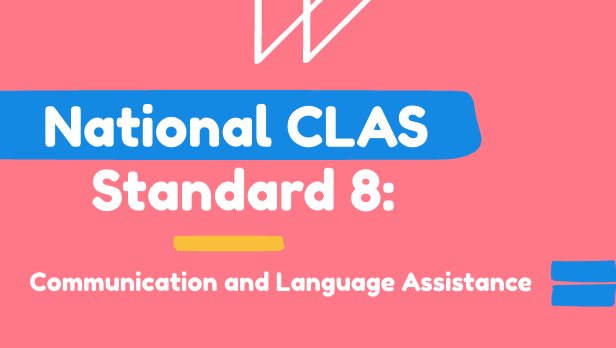Standard 8 | Provide easy-to-understand print and multimedia materials and signage in the languages commonly used by the populations in the service area.
Purpose | Standard 8 helps to ensure that readers of other languages and individuals with various health literacy levels are able to access care and services; provides access to health-related information and facilitate comprehension of, and adherence to, instructions and health plan requirements; enables all individuals to make informed decisions regarding their health and their care and services options; offers an effective way to communicate with large number of people and supplement information provided orally by staff members; helps organizations comply with the requirements such as Title VI of the Civil Rights Act of 1964; the Americans with Disabilities Act of 1990; and other relevant federal, state, and local requirements to which they may need to adhere.
Strategies for Achievement | Examples of Strategies:
- Train staff to develop and identify easy-to-understand materials, and establish processes for periodically re-evaluating and updating materials (AHRQ, 2010)
- Develop materials in alternative formats for individuals with communication needs, including those with sensory, developmental, and/or cognitive impairments as noted in Advancing Effective Communication, Cultural Competence, and Patient- and Family-Centered Care: A Roadmap for Hospitals (The Joint Commission, 2010)
For additional strategies, see “The Blueprint“ an implementation guide to help you advance and sustain CLAS within your organization.
The Checklist | Work with your team to complete this Implementation Checklist for the National CLAS Standards to find areas of opportunity and create your CLAS Action Worksheet.
The Great Plains QIN team developed a simple video to outline the National CLAS Standard 8. If you have questions or would like technical assistance on how to implement the National CLAS Standards, contact a member of the Great Plains QIN Team.


